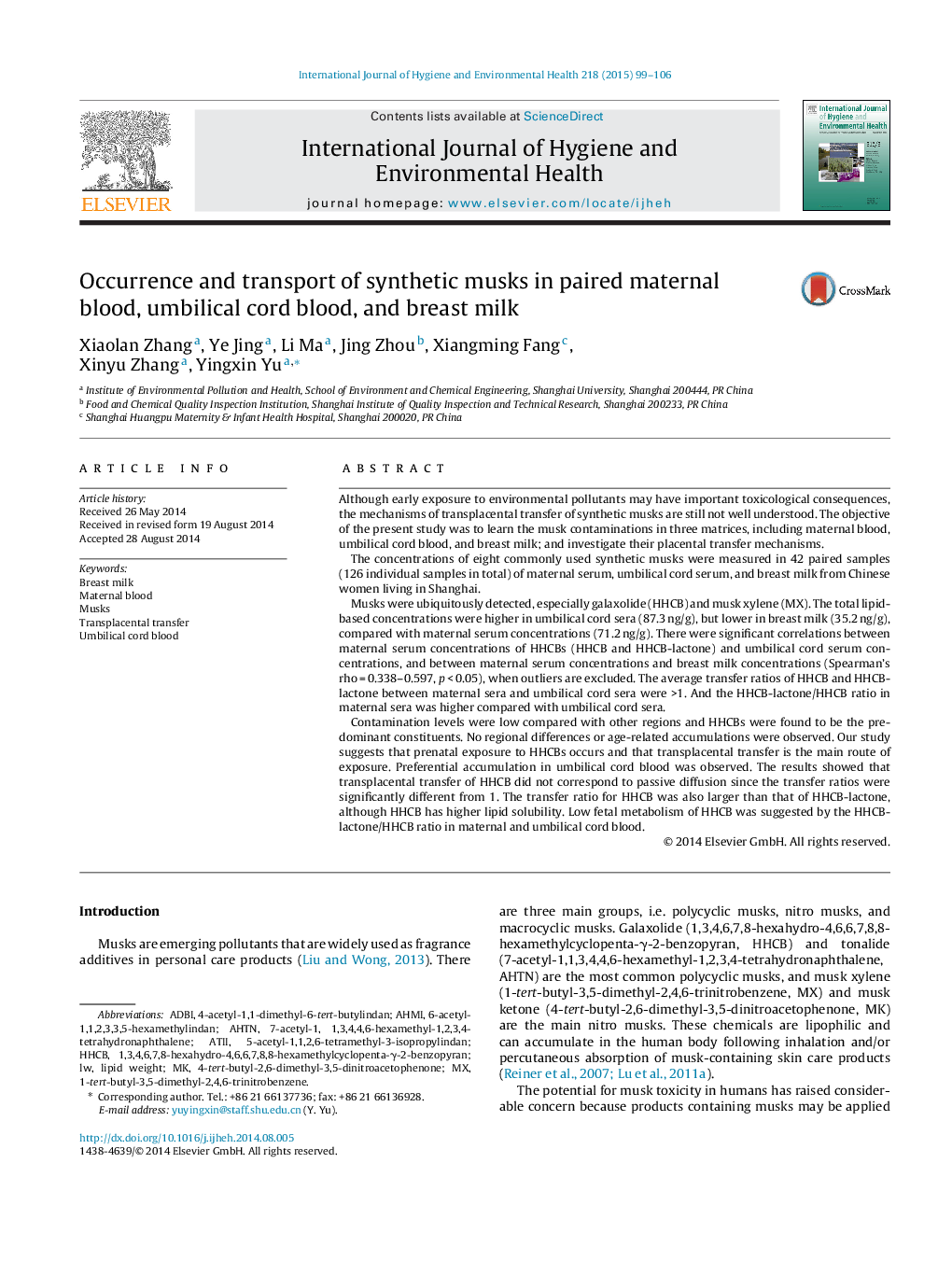| کد مقاله | کد نشریه | سال انتشار | مقاله انگلیسی | نسخه تمام متن |
|---|---|---|---|---|
| 5854615 | 1561893 | 2015 | 8 صفحه PDF | دانلود رایگان |
Although early exposure to environmental pollutants may have important toxicological consequences, the mechanisms of transplacental transfer of synthetic musks are still not well understood. The objective of the present study was to learn the musk contaminations in three matrices, including maternal blood, umbilical cord blood, and breast milk; and investigate their placental transfer mechanisms.The concentrations of eight commonly used synthetic musks were measured in 42 paired samples (126 individual samples in total) of maternal serum, umbilical cord serum, and breast milk from Chinese women living in Shanghai.Musks were ubiquitously detected, especially galaxolide (HHCB) and musk xylene (MX). The total lipid-based concentrations were higher in umbilical cord sera (87.3 ng/g), but lower in breast milk (35.2 ng/g), compared with maternal serum concentrations (71.2 ng/g). There were significant correlations between maternal serum concentrations of HHCBs (HHCB and HHCB-lactone) and umbilical cord serum concentrations, and between maternal serum concentrations and breast milk concentrations (Spearman's rho = 0.338-0.597, p < 0.05), when outliers are excluded. The average transfer ratios of HHCB and HHCB-lactone between maternal sera and umbilical cord sera were >1. And the HHCB-lactone/HHCB ratio in maternal sera was higher compared with umbilical cord sera.Contamination levels were low compared with other regions and HHCBs were found to be the predominant constituents. No regional differences or age-related accumulations were observed. Our study suggests that prenatal exposure to HHCBs occurs and that transplacental transfer is the main route of exposure. Preferential accumulation in umbilical cord blood was observed. The results showed that transplacental transfer of HHCB did not correspond to passive diffusion since the transfer ratios were significantly different from 1. The transfer ratio for HHCB was also larger than that of HHCB-lactone, although HHCB has higher lipid solubility. Low fetal metabolism of HHCB was suggested by the HHCB-lactone/HHCB ratio in maternal and umbilical cord blood.
Journal: International Journal of Hygiene and Environmental Health - Volume 218, Issue 1, January 2015, Pages 99-106
